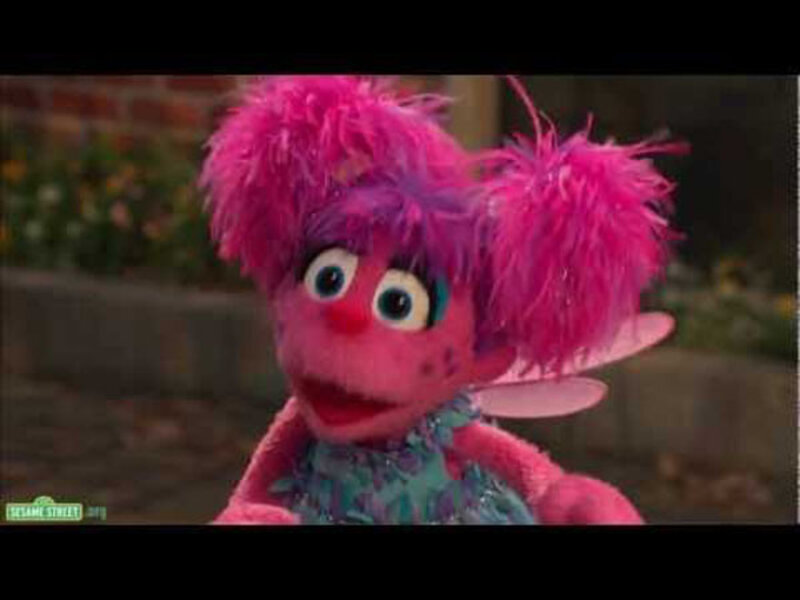'Sesame Street' tackles the big 'D,' Divorce
For the first time on Sesame Street, "D" is for Divorce.
Two decades after the show’s producers created and then scrapped a segment about Snuffy’s parents splitting up, we learned on the Sesame Street website yesterday that Abby Cadabby, that bubbly pink fairy-in-training, has not one but two houses – one where she lives with her mommy, and one where she stays with her daddy.
She explains the situation to a bewildered Elmo and Rosalita. Abby’s friend Birdie – whose parents, we learn, are also divorced – also swoops down from a nearby fire escape to join in. (And to help start off the peppy and confident song that has the refrain: “They live in different places but they both love me.” Which, I have to admit, is pretty darn catchy. Nothing like humming that one over coffee to get some strange looks from Husband.)
Anyhow, Abby’s situation is part of the Sesame Street multimedia package, “Little Children, Big Challenges,” which was created to tackle everything from bedtime blues to bullying, from making new friends to having a parent incarcerated. This particular project is to give “much-needed resources” for divorcing families with young children, aged 2 to 8, the show says.
“Each year about 1.5 million children confront the divorce of their parents, a transition that can be challenging for the entire family, especially young children,” said a press release put out by the Sesame Street Workshop, the nonprofit educational organization behind the show. “While 40 percent of families experiencing this, there are few resources to show children they are not the only ones with big questions and feelings about divorce.”
Which kind of makes one wonder – has Sesame Street avoided this topic for 40 years? "R" is for ... Really? After all, this is the kids show that has tackled everything from race, adoption, and pregnancy to death and natural disasters.
(After Hurricane Sandy, producers re-edited a series from the early 2000s that showed Big Bird coping with a storm that had destroyed his nest and damaged his neighborhood.)
Well, as it turns out, the show’s producers did try to put together a segment on divorce in 1992. It just didn’t work.
In an article earlier this week, Time magazine and Tumblr Storyboard tell how, after a US Census report showed that nearly 40 percent of the country’s children would soon live in divorced homes, Sesame Street’s best writers, researchers and producers got together to design a script where Snuffy – aka Mr. Snuffleupagus – confides to Big Bird that his dad is moving out of his family’s cave.
The creators took the normal Sesame Street approach: Gordon explained why divorce happens, everyone assures Snuffy (and viewers) that his parents still love him very much, the characters talk and sing about how Snuffy will have good homes, and so on and so on.
But when producers tested the segment on a group of preschoolers, it bombed.
The kids were in tears. They thought nobody loved Snuffy. They worried their own parents were going to get divorced.
“It was really the first time we’d produced something, put all this money into it, tested it, and it just didn’t work,” Tumblr Storyboard quoted Sesame Street researcher Susan Scheiner as saying.
And so the show avoided the concept – until this week.
(Now, maybe I'm just a kid of the '80s, a member of what has been called the divorce generation. But isn't this ... I don't know ... amazing? Even even now, Sesame Street divorce won’t come into parent's living room unexpectedly. It is only online, available for interested parents, avoidable for the rest.)
The segments are varied, from Abby and Birdie’s peppy song to tougher scenes such as when Abby cries to Gordon that she’s worried it’s her fault her parents are getting a divorce, or when she has her magic crayons draw for her friends the story of how her parents told her they were splitting.
Along with the videos, the website has tips for parents, extended family members, links to webinars and a mobile app called “Sesame Street: Divorce.”
"With the frequency of children experiencing divorce and or separation today, it is critical to help children understand that the feelings or questions they may have are typical and should be discussed with a parent or caregiver," said Jeanette Betancourt, senior vice president for outreach and educational practices at Sesame Workshop, in the release. “These strategies will help children cope with changes as well as support them in understanding they are not alone.”






